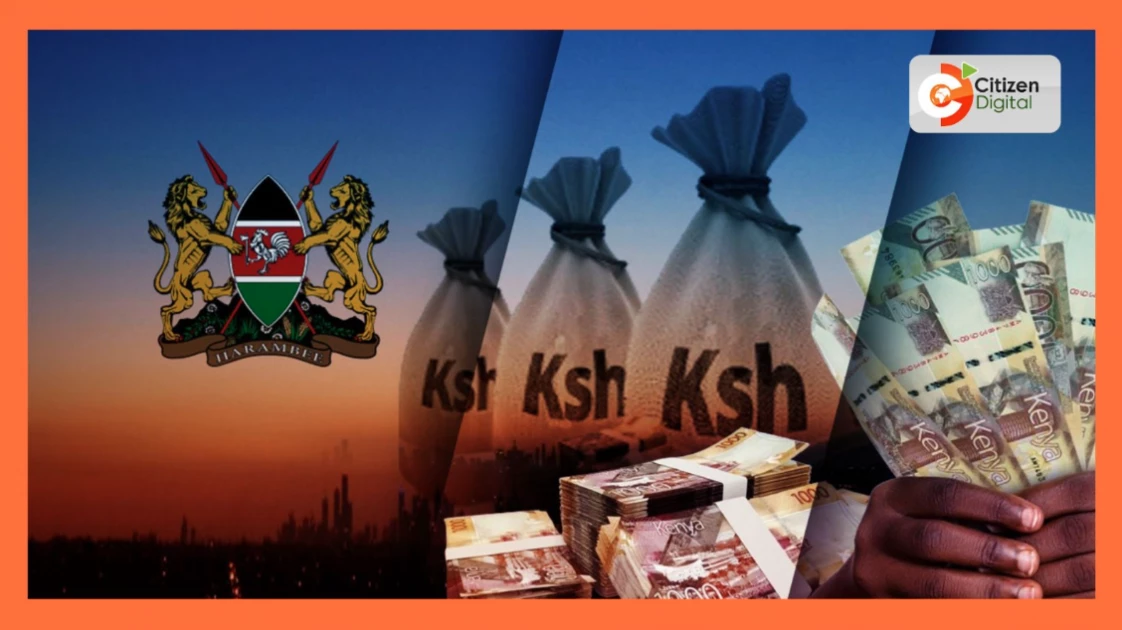Budget office advises MPs to exercise caution in FY 25/26 budget amid turbulent economic outlook

The PBO is of the opinion that Kenya’s economic outlook for 2025 remains “a delicate balance of risks and growth opportunities that present a mixed picture.”
The parliamentary economic think-tank states that the highest prospects for driving the economy within the coming year will be done mainly by the agriculture and services sectors of the economy as they have remained resilient and hold the most growth potential.
But on the flip-side of growth lurks the risks that could deter or even negate economic growth. The risks driven by factors such as climate change, fiscal consolidation, debt vulnerabilities, and global economic trends, all which must, going forward, be carefully mitigated.
A turbulent economic outlook
The PBO says that fiscally, Kenya “remains turbulent, characterized by shortfalls in revenue collection, substantial debt service costs, and rising expenditure pressures on social programs such as education and health.”
The biggest pointer towards this is the revenue performance in the first half of FY 2024/25 which indicates that the government is still struggling to meet its annual revenue collection target.
As of December 31, 2024, the total ordinary revenue collected amounted to Ksh.1.1 trillion, which is equivalent to 44.1 percent of total revenue for FY 2024/25. This has become a sticky perennial problem.
During the FY 2024/25 period Ksh. 653.5 billion was paid as interest on public debt is an indication of the cost pressure that public debt servicing is impacting the budget. This has not been made any easier as the government, still hungry for more money, has continued to approach more sources for funds to satiate its hunger.
The PBO vouches for a precise implementation of its policy proposals and an effective delivery of sought interventions will assure the achievement of “key macroeconomic variables over the medium term.”
It calls on the government to articulate appropriate policies and closely monitor the implementation of ensuing programs to achieve economic pliability and ramp up service delivery which the Kenya Kwanza government cites as part of its core mandate.
PBO charts way forward
First on the list of strategies to pursue, the PBO advises the government to follow the path of investments that support the Export Sector. The PBO is calling on the government to approach this with targeted sector-specific investments that foster private sector-led growth.
This includes but not limited to promising agriculture value chains, such as the horticulture industry which holds high potential and a key export area with greater yields in employment creation, growth into other markets and of course better export revenue generation.
The parliamentary think tank says that this will require regulatory reforms to facilitate a favorable business environment and enhance market access. The PBO also fancies policy re-alignment to achieve sustained efforts in securing regional and global markets for Kenyan products in line with existing Economic Partnership Agreements (EPAs).
Secondly, the PBO budget options for FY 2025-26 proposes avenues the government could pursue to achieve increased disposable income for taxpayers. This, it says, could be done via improved allocation to development vis-s-vis expenditure. This approach would boost individual income and household purchasing power through the proven feedback loop enabling stimulation in consumption, more ventures being set-up and a rise in trade.
Another route that the parliamentary economic think tank proposes concerns encouraging private investment coupled with government facilitation commonly referred to as Public Private Partnerships. This it says will increase efficiency and improve government investments in infrastructure development, education, healthcare and energy among other areas.
Other areas that could do very well and spur the economy including a specific and deliberate policy to grow manufacturing, the services and technological sectors.
The policies should be geared towards stimulating market efficiency and mobilizing capital to facilitate export-led growth.
Job creation and Productivity enhancement also ranks very high within the proposed avenues for economic consideration in the medium term by the Kenya Kwanza Administration. One of the avenues chosen under this model is the development of leather products value chain.
The value chain could range from the revitalization of of livestock feeding programs to attain better health for livestock; provide extension services in all wards across the country, allocate sufficient funds for the cleaning up of hides and skins and lastly to allocate sufficient funds towards completing the facilities at the Kenya Leather Industrial Park.
One area that the PBO would like to see attended to include revitalizing Kenya’s rural electrification programme (REP) with an interesting proposal; to have the programme ring-fence 30 percent of its total budget towards funding off-grid connectivity.
The PBO also mooted the promotion of diaspora investments by creating awareness over ripe opportunities back at home as well as linking local businesses with the diaspora to undertake joint business ventures.
They urge the government to create special investment vehicles designed for the diaspora to attract and involve diaspora investments.
Other areas include having the government leveraging on digitization by strengthening the backbone of internet connectivity, and fast-tracking the completion of all 290 Constituency Industrial Development Centers (CIDCs).
The PBO suggests that the Facility Improvement Fund (FIF), a conditional grant from the Sports Arts and Social Development Fund (SASDF), should be given 40 percent of what is reserved for the Universal Healthcare (UHC) for setting up or maintaining primary healthcare facilities to widen the scope and quality of services offered under the Social Health Authority (SHA).
The PBO also proposes to address the challenges in financing education in Kenya by scrapping altogether the National Examination/ Assessment Waiver Policy by redirecting its annual funding of 5 billion towards critical learner centered areas, consolidate the fragmented existing bursaries for higher efficiency, among other measures.
The Inflating budget
All these noble proposals from the PBO must be looked at, in contrast to the published Treasury Draft 2025 Budget Policy Statement (2025 BPS). The Kenya's FY 2025/26 budget, has its revenue, expenditure, and key sectoral priorities.
The total revenue for FY 2025/26 is projected at Ksh.3.5 trillion, an increase from Ksh 3.06 trillion in FY 2024/25.
This increment in the total budget is even as National Treasury said today that it is reviewing down the revenue collection target for the Kenya Revenue Authority (KRA) conceding that it has over the years set unrealistic targets for the taxman occasioning the missing of targets year in, year out.
The government might have subtly admitted that the economy is not as rosy as it has repeatedly alluded to.
The Treasury’s overall expenditure is projected at Ksh.4.3 trillion, up from Ksh.3.8 trillion in FY 2024/25, resulting in a fiscal deficit of Ksh.759.4 billion.
But even on this deficit the government has been waxing both hot and cold as it reiterated a cut back on the overall budget over the Gen-Z demos that forced a withdrawal of the FY2024-25 budget, however on 12th February 2025, it presented a supplementary budget in parliament that essentially restored the additional over 300B it had slashed off the budget within this financial year.
This Financial Year, the government budget has surmounted the 4.1 trillion mark, a far cry from the stated 3.8 trillion Essentially the government has refused to live within its means for frivolous reasons.
Treasury Draft 2025 Budget Policy Statement (2025 BPS) emphasizes the Bottom-Up Economic Transformation Agenda (BETA) with a focus on agriculture, MSMEs, housing, healthcare, and digital industries.
This partly captures what the PBO has suggested but also misses out on some of the suggestions from the PBO that had for the manufacturing sector, aggressive debt management approaches and increased disposable income for taxpayers to lift up their purchasing power, to mention but a few.
On the positive side, the Treasury Draft 2025 Budget Policy Statement (2025 BPS) proposes spurring the agricultural sector, the energy, ICT and infrastructure sectors as well as the housing, education and health sectors.
It states that the government’s fiscal policy for the FY 2025/26 and over the medium-term places special emphasis on fiscal consolidation to reduce public debt vulnerabilities while providing fiscal space to deliver essential public goods and services.
Treasury says that fiscal consolidation will be supported by concerted expenditure rationalization and revenue mobilization efforts; which hitherto have not worked very well as expenditure keeps shooting up as seen through the supplementary budgets and annual increments in taxes which hurt taxpayers’ disposable income.
The Parliamentary economics think-tank says its proposed policy options and alternative fiscal framework,” if properly pursued, would positively stimulate and impact sustainable economic growth, job creation, and revenue generation.”
The 16th edition of PBS Budget Options dissects Kenya's fiscal challenges, which it ties to specific plans to achieve economic growth, create more jobs, and ramp up service delivery.
Want to send us a story? SMS to 25170 or WhatsApp 0743570000 or Submit on Citizen Digital or email wananchi@royalmedia.co.ke
Comments
No comments yet.


Leave a Comment